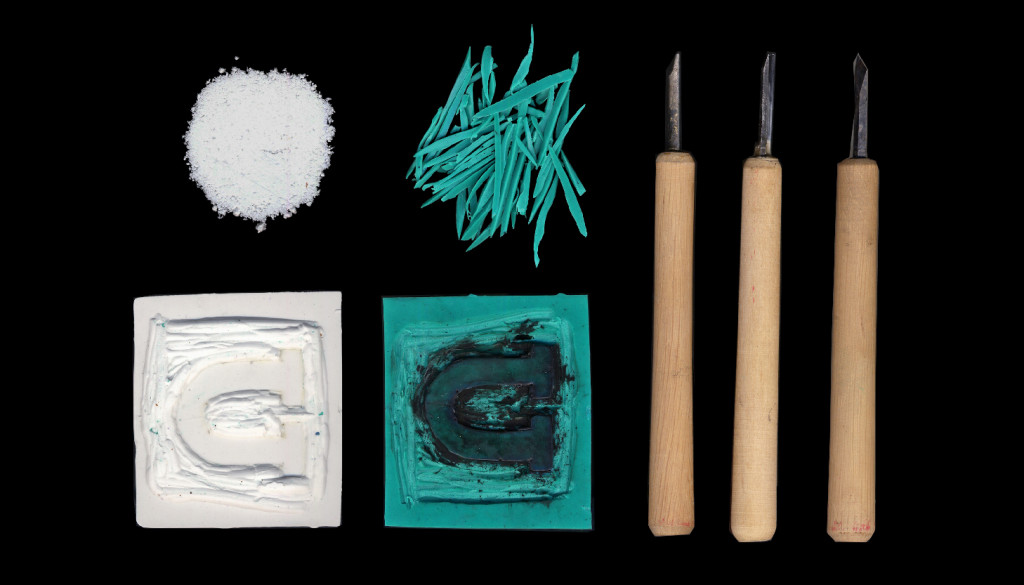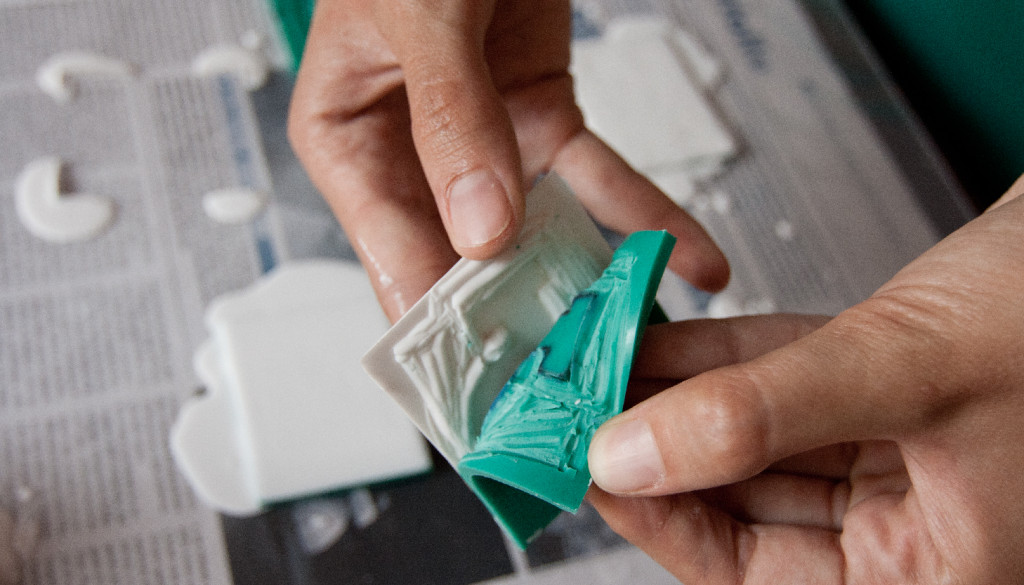Workshop : DiY/Do It Yourself
Organizer : Edizioni Lucky Shoes
Partner : IUAV – University of Venice
Tutor : Katerina Dolejsova
Year : 2012
Concept
The presence or absence of something or someone can lead us to a negative-positive feeling? The lack of a person, of an object or a place can make us reflect or even make us suffer.
I worked on the concept of presence-absence in order to shine a light on aspects that often form the background to a main subject. Negative and positive are considered as two levels of separate representation, which together form a unit, but which each have their own need of existence.
Typography
As a guideline for the design, I use Serifa of Adrian Frutiger for greater ease in carving the 45° angles and for its regularity. The character set is engraved with the gouges in the linoleum. The letters were carved in rectangular modules in order to create a complete modular set. Then I use a mortar of Keramix and a thinner poured into the linoleum mold to produce a mirror of my work. The incisions are in relief, the work of subtraction rises to the surface. Finally, the linoleum stamps are attached to quadrangular wood pieces to obtain an entire set.
Fanzine
Into any part of the text is highlighted a word, representative of the concept. His initial is stamped on the back of the page and is the only part not photocopied. These letters together form the word ERGO BUM, the title of my work. My fanzine is built on several levels of interpretation as well as I had previously done for the construction of the alphabet.
The first level consists of a sequence of images which is subtracted and cut a part. This subtracted image has a significant value, so strong that even after my cutting operation, the silhouettes of this part express a visual strength.On the left, the cutting objects reappear, separated from their context, but reflected as if the closing pages forced them to stay beyond the boundary and to look their source image and the empty space. Only when the fanzine is closed the two images can meet again and be together, but we can not see their union but we can only imagine it.
 The yellow pages contain extracts of the book A Brief History of Time. From the Big Bang to Black Holes written by the British physicist Stephen Hawking in 1988. I chose the parts in some way significant to understand the physical and metaphorical meaning of the black holes.
The yellow pages contain extracts of the book A Brief History of Time. From the Big Bang to Black Holes written by the British physicist Stephen Hawking in 1988. I chose the parts in some way significant to understand the physical and metaphorical meaning of the black holes.
More info
DiY Blog









